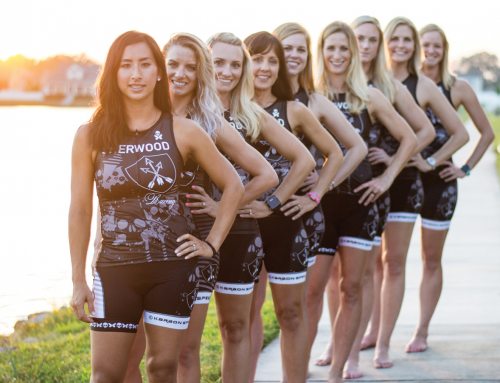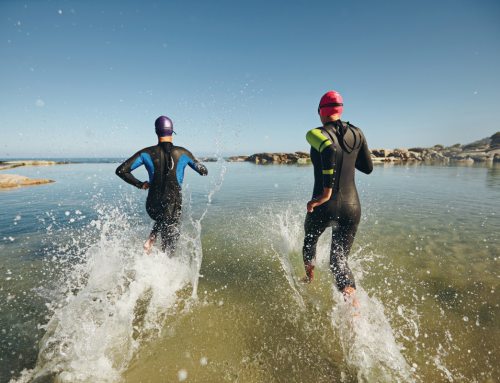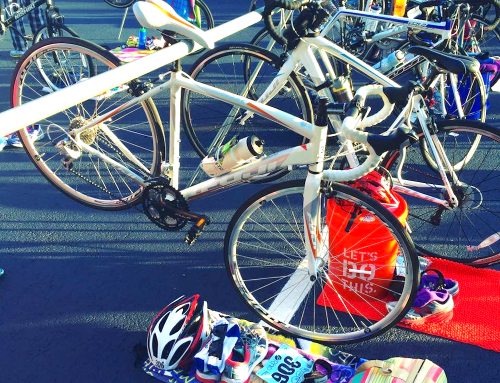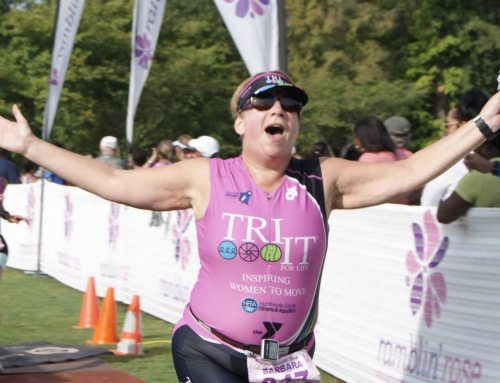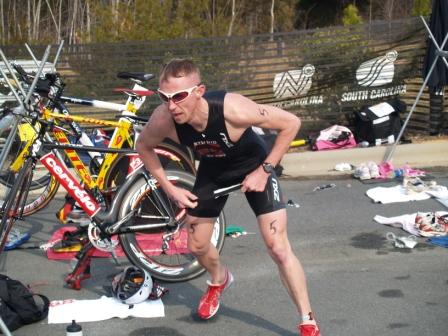
By Sonni Dyer
It could take weeks, even years, to shave a few minutes off your run, bike or swim split in a triathlon. But, don’t worry, while you’re working on the physical improvements to garner a faster time, there are a couple of things you can do right now to make you a faster triathlete. In a race where the difference between first and second can be a matter of seconds, smooth transitions are key to a successful race. Depending on your current skill set, my tips for faster transitions could save you up to a minute or even more during your next race!
T1 Tips – Swim to Bike
- Spray cooking spray (like Pam) directly on shins and ankles of the OUTSIDE of your wetsuit to aid in getting it off quickly and easily during the first transition, T1.
- At the end of the swim, begin running when you can touch the bottom with your hand.
- Always swim to draft off of slightly better swimmers. There a lot less contact when you have a “blocker”.
- If there’s no wetsuit on the swim, avoid wearing anything that drags in the water (such as running shorts).
- Once you turn the final buoy and make your way to shore, pick a point BEYOND the swim-exit (but in the same visual path) to site for. This allows your head to stay lower in the final meters, allowing you to kick less, and thereby save the legs for the run to the transition area and the bike.
- Make sure your bike is in an appropriate gear when you rack it prior to the race. Examine the first 200m of road past the mount-line and look at its grade of elevation gain/loss to determine the appropriate gear for you.
- If you have you’re transition routine down tight and are looking to gain even a few more precious seconds, practice getting on the bike and pedaling with your feet on top of the shoes already clipped in. Once you get rolling you can put your feet in the shoes. You’ll want a pair of “tri-specific” bike shoes for this.
T2 Tips – Bike to Run
- Practice taking your feet out of your shoes WHILE still on the bike (pedaling) in the closing 400m before the dismount line. This is called a “cyclo-cross” dismount and can be used to save time in your bike-to-run transition and to avoid running through transition areas in cleats on bike-fatigued legs.
- Opt to use a slightly smaller gear and spin at 90 rpms coming in to the transition area for the last ½ mile of the bike. This preps the running legs to neuromuscularly acclimate to a more run-like stride rate and will facilitate running off the bike, at your optimal pace, much sooner.
- Use lace-locks or ez-laces to get running shoes on quickly.
- A race belt for your bib number is perfect for carrying the number across the finish-line and saves your expensive tri-top from pin-holes!
# # #
Sonni Dyer is a Head-Coach and owner of Studio7Multisport.com. He is a 2-time winner of the NCTS Elite/Open division and won National Championships in ’99 and 2001. Sonni has guided athletes of all abilities for over 15 years & can be contacted at sonni@studio7multisport.com.


